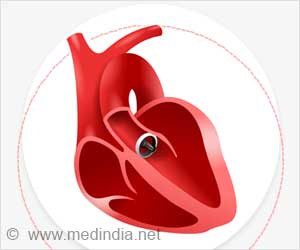People who have higher levels of a chemical in their body that indicates exposure to commonly used insecticides pyrethroid die of heart disease at a significantly higher rate, reveals a new study.

‘Pyrethroids are among the list of commonly used insecticides with the largest market share, and they constitute the majority of commercial household insecticides.
’





He also cautions that as an observational study, the research does not determine if the people in the sample died as a direct result of their exposure to pyrethroids. He says that the results indicate a high likelihood of a link, but more research is needed to replicate the findings and determine the biological mechanisms.Pyrethroids are found in numerous commercial insecticide brands and are used widely in agricultural, public, and residential settings for pest control. Metabolites of pyrethroids, such as 3-phenoxybenzoic acid, can be measured in the urine of people who are exposed to pyrethroids.
Bao and his team of researchers analyzed data on 3-phenoxybenzoic acid levels in urine samples collected from 2,116 adults aged 20 and over who participated in the United States National Health and Nutrition Examination Survey between 1999 and 2002. They cross-referenced mortality records to determine how many of those adults in their data sample had died by 2015 and of what cause.
They found that during an average 14 years of observation, those people who had the highest levels of 3-phenoxybenzoic acid in their urine samples were 56% more likely to have died of any cause by 2015 than people with the lowest levels of exposure. Cardiovascular disease was by far the leading cause of death, with a three times greater likelihood.
While Bao’s study did not determine how the subjects became exposed to pyrethroids, he says previous studies show that most exposure to pyrethroids is through food, as people who eat fruits and vegetables that have been sprayed with them ingest the chemical. Residential use of pyrethroids in gardens and homes for pest-control is also a significant source of exposure. Pyrethroids are also present in household dust in homes that apply these pesticides.
Advertisement
The paper, “Association Between Exposure to Pyrethroid Insecticides and Risk of All-Cause and Cause-Specific Mortality in the General US Adult Population,” was co-authored by Buyun Liu and Hans-Joachim Lehmler in the UI College of Public Health and Derek Simonsen, a UI graduate student in human toxicology. It was published in the Dec. 30, 2019, issue of JAMA Internal Medicine.
Advertisement












